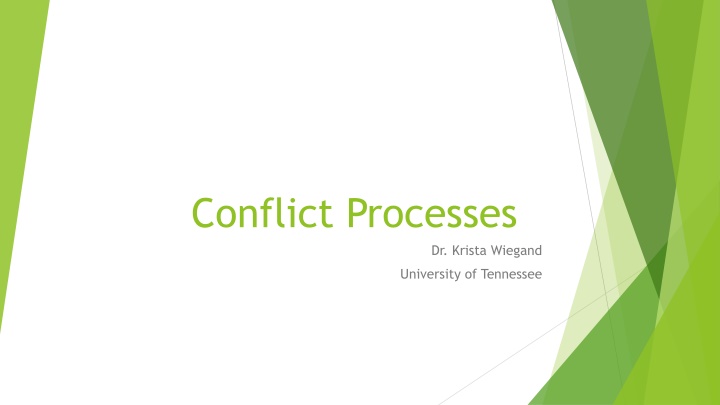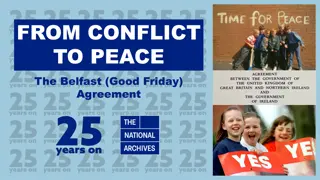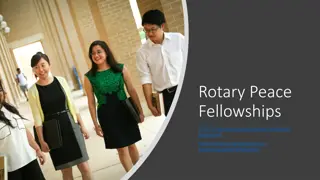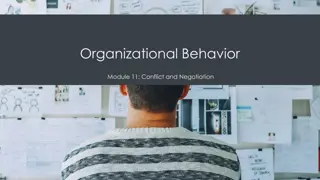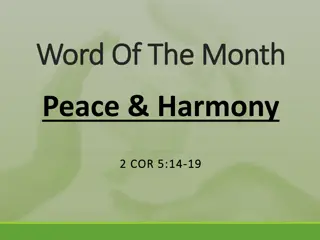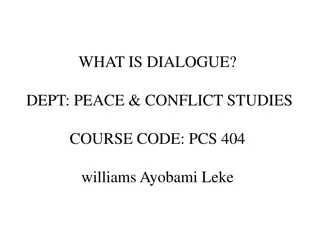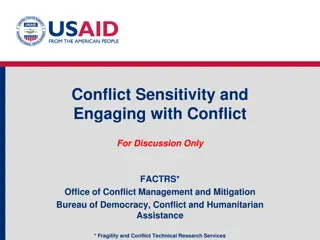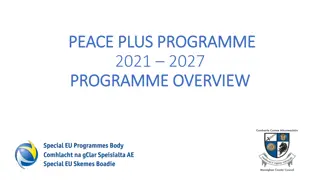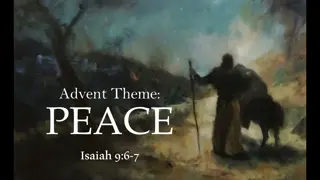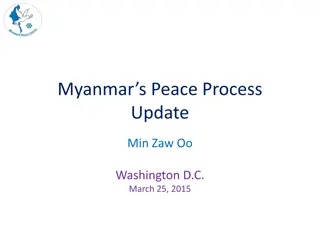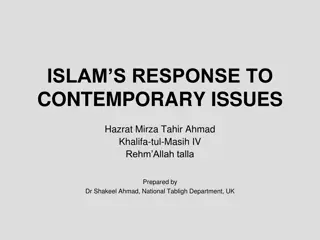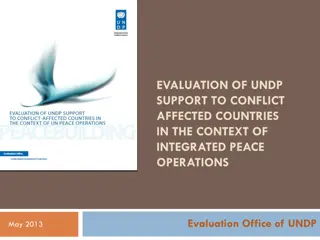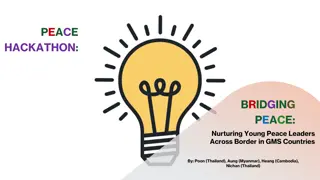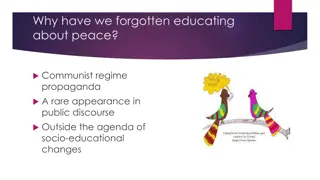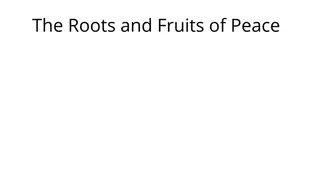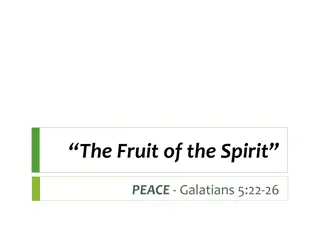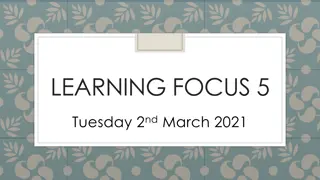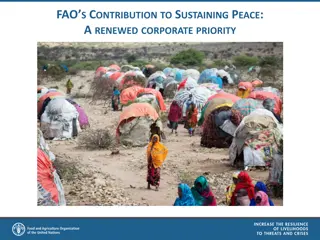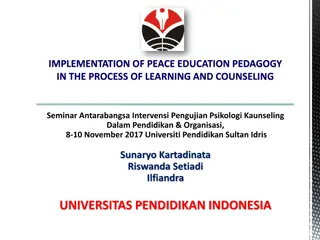Conflict Processes and Peace Studies Overview
Conflict Processes involve the study of patterns in international conflicts and disputes, emphasizing conflict management. Peace Studies focus on positive peace, non-violence, and justice, rooted in various disciplines like anthropology, sociology, and philosophy.
Download Presentation

Please find below an Image/Link to download the presentation.
The content on the website is provided AS IS for your information and personal use only. It may not be sold, licensed, or shared on other websites without obtaining consent from the author.If you encounter any issues during the download, it is possible that the publisher has removed the file from their server.
You are allowed to download the files provided on this website for personal or commercial use, subject to the condition that they are used lawfully. All files are the property of their respective owners.
The content on the website is provided AS IS for your information and personal use only. It may not be sold, licensed, or shared on other websites without obtaining consent from the author.
E N D
Presentation Transcript
Conflict Processes Dr. Krista Wiegand University of Tennessee
What is Conflict Processes? Also known as conflict management NOT the same as security studies NOT the same as peace studies More quantitative research, but also includes qualitative research methods
Security Studies Strategic studies, military studies Focus on military threats, use of force, and war Nuclear weapons, arms races, nuclear proliferation, disarmament Alliance, rivalry, security dilemma Deterrence, military technology, offense-defense Geopolitics, grand strategy, military-civilian relations, military strategy and doctrine
Peace Studies Started out examining causes of war Focus is more on positive peace, rather than negative peace Johan Galtung not just absence of conflict Emphasis on norms of violence, peace, international law, justice, human rights Rooted in non-violence as means to resolve disputes, seek justice More liberal, critical, and radical views about peace pacifism, peace activism in the classroom & in research More theoretical, less empirical Includes IR, but also other fields of study anthropology, history, international law, sociology, philosophy, theology, etc.
Conflict Processes First wave of peace studies, but peace studies moved away from scientific study Patterns of behavior in international disputes and conflicts mostly about the causes of war or political violence Scientific study of war empirical patterns, trends, explanations Quincy Wright (political science), Lewis Richardson (mathematics), J. David Singer (political science) patterns of conflict Increased emphasis on conflict management
Types of Armed Conflict Internal armed conflict civil wars Internationalized internal armed conflict Interstate armed conflict Extrasystemic armed conflict Also: individual and group level political violence: assassinations/coup d tat, terrorism, insurgency, violent protests/demonstrations, rebellions, revolutions
Trends in Armed Conflict Post-Cold war countries are cycling in and out of recurring conflict more frequent occurrence Decline in interstate conflicts since 2003 Civil wars more common Recurrent conflicts are more common than onset of new conflicts Conflicts that end are more likely to recur Overall, number of armed conflicts worldwide has leveled off, but not necessarily declined
Stages of conflict process Prevention/causes/onset/escalation of conflict Management Resolution/settlement Post-conflict/peace-keeping Peacebuilding
Conflict Management Focus on how to deal with severity and frequency of international disputes, civil wars, armed conflicts Negotiation, mediation, interstate bargaining Emphasis on rationalist bargaining model Growth of quantitative data sets about civil wars, mediation, interstate disputes and wars 1990s-2000s huge increase in focus on conflict management of armed conflict Study of the strategy of peaceful attempts to resolve contentious issues
Armed Conflict Armed conflict = at least 25 battle related deaths in any given year War = at least 1,000 battle deaths overall UCDP/PRIO/COW datasets Study of causes, escalation, duration, termination of war and conflict Study of disputes turning into armed conflict
2 approaches to teaching 2 distinct strategies of teaching conflict processes: 1) Causes/onset of armed conflict Focus on factors/independent variables that explain conflict/political violence Why do wars/armed conflict/political violence occur? 2) Conflict management Focus on dependent variables that are explained by factors in IR Which factors determine the success of conflict management?
Causes of War Structure of the international system power politics, realism, polarity, balance of power Anarchy, arms races, security dilemma Alliances balancing, bandwagoning Territorial & issue related disputes issues approach, territorial and maritime disputes, contentious issues Steps to war contiguity, rivalry, territorial disputes, issues approach Rivalry types of rivalries, duration, evolution, termination of rivalry Democratic peace regime type, normative & structural factors of democratic regimes, Kantian peace Economics capitalism & war/peace, interdependence, international trade, sanctions, and war
Causes of War Domestic politics domestic audience costs, leader survival, political accountability, two-level game Misperceptions under/over-estimations of capabilities, intentions, resolve, etc., psychological factors Crisis bargaining & coercive diplomacy bargaining model, rationality, crises, diplomacy Conventional deterrence deterrence strategy, conventional weapons Nuclear weapons & deterrence nuclear proliferation, MAD, realism Diversionary use of force diversionary war, domestic politics, rally around the flag Civil wars & ethnic conflict ethnic war, genocide, conflict resolution, partition, peacekeeping
Example: Dangerous Dyads (Bremer) Most important factors of war: Contiguity Absence of alliance Absence of advanced economy Absence of democracy Absence of overwhelming power preponderance Major power
Conflict Management Types of settlement Bilateral negotiations Non-binding third party methods - mediation, conciliation Legal, binding third party methods arbitration, adjudication Success of settlement attempts Study of termination, duration, intensity of armed conflict Third party intervention military, humanitarian Peacekeeping Peacebuilding Humanitarian aid
Conflict Process Useful to teach scientific approach in social science theory building, hypotheses, variables, measurement, operationalization, testing theory, deduction vs. induction, data sets, data analysis, findings Students can select different outcomes to explain onset, escalation, duration, intensity, termination of armed conflict; settlement attempts, conflict management success
